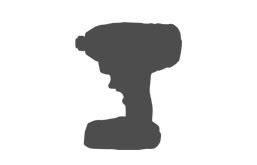Quick Select
Select specific models or manufacturers you want to see
Comparison tables not only compare products they organize product details into a normalized readable format. SpecLook does the hard work for you by finding all of the information from multiple sources, normalizing the values, and organizing all that data into easy to read tables. SpecLook tables allow you to search, sort, and filter, making it easier to find the details that are most important to you.
The comparison table on this page shows all products available for this type. You can use the filters section next to the table to narrow down the listings, OR you can select only the products and/or manufacturers you would like to see by selecting them here and then clicking the Customize Table button.
Most Popular
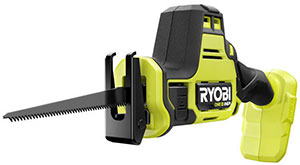
Others
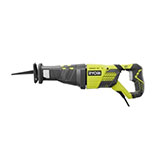
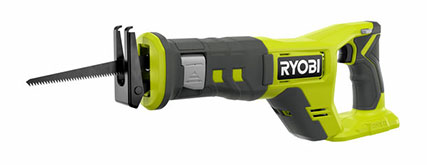
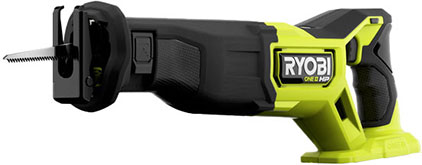
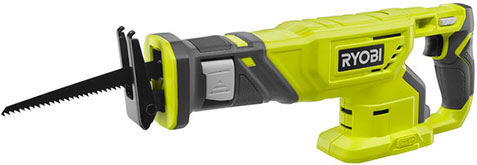
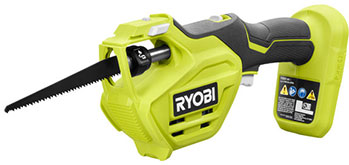
Most Popular
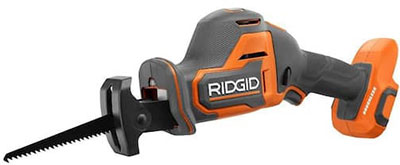
Others
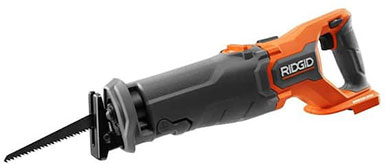
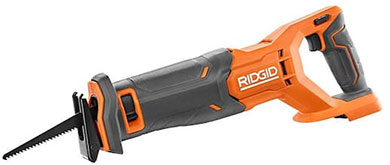
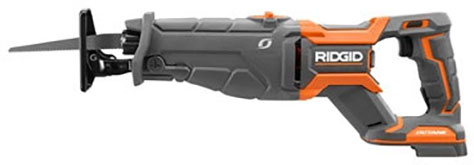
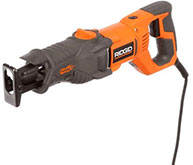
Most Popular
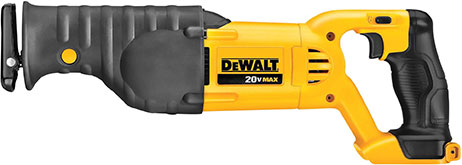
Others
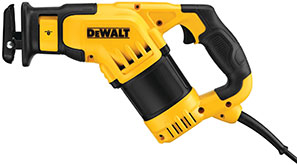
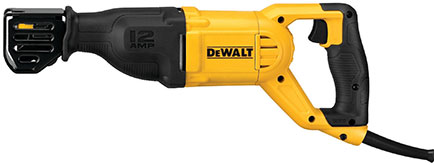
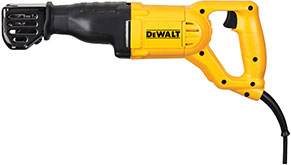
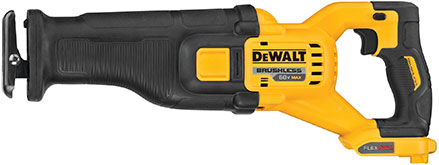
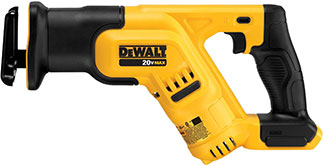
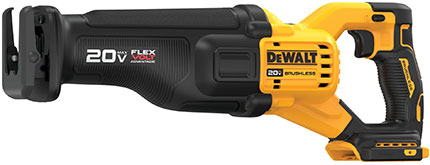
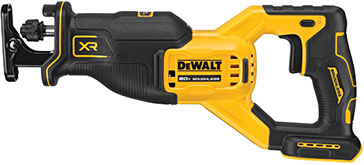
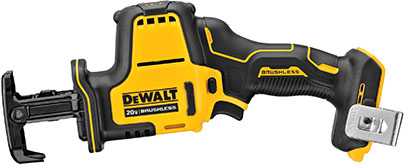
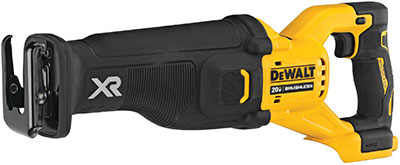
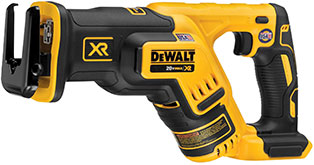
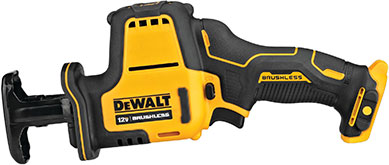
Most Popular
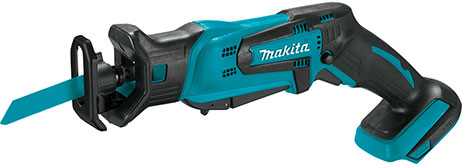
Others
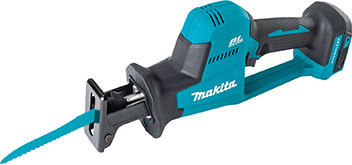
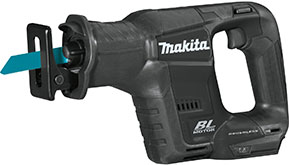

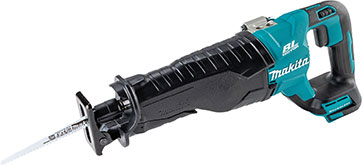
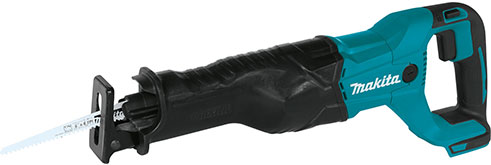
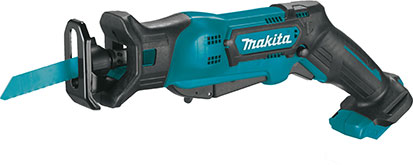

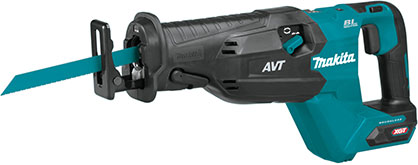
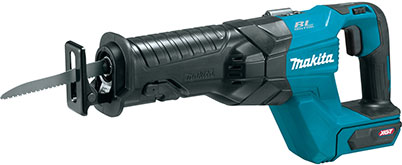
Most Popular
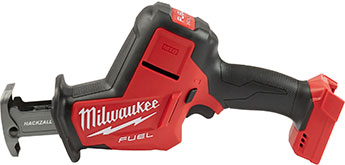
Others
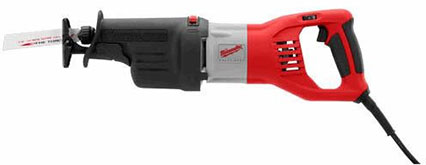
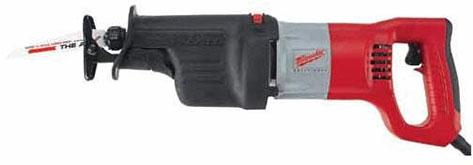
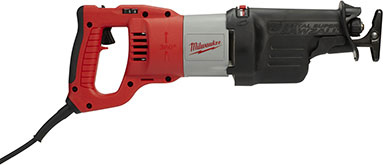
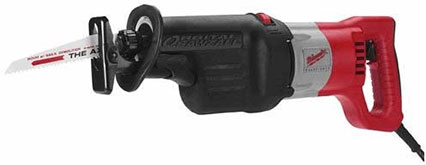
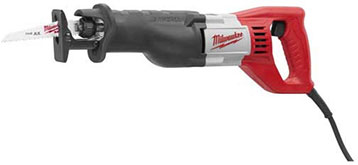
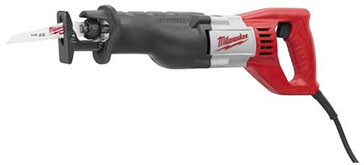

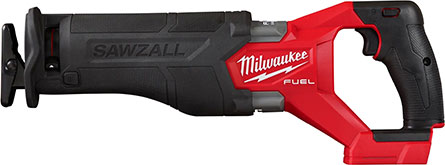


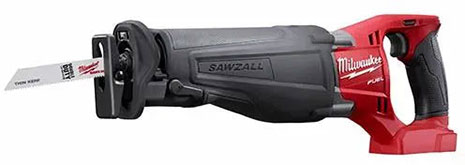
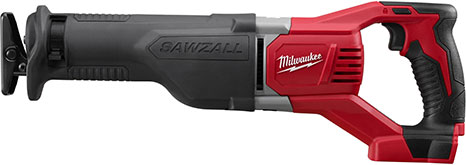
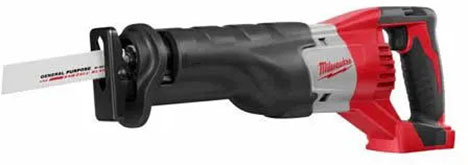
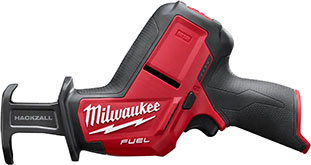
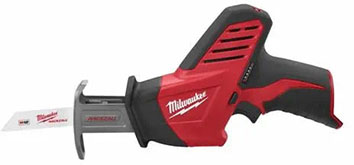

Need help choosing which product fits you best? Click Here
Comparison Awards
Awards are based on the comparison of details and specifications gathered for each product. SpecLook does not favor or promote any specific products or manufactures over any others.
Filters
You can also sort some of the columns by clicking the column titles.
Compare Reciprocating Saws
(Hold Shift while scrolling to scroll horizontally)
| Product | Compare | Image | Category | Manufacturer | Model | Avg. Price | Links | Avg. Rating | Total Rating Count | Ratings | Dimensions (HxWxD) | Weight | Power Type | Battery System | Motor Type | Amps | Battery Type | Voltage | Cord Length | Length of Stroke | Strokes Per Minute (Max) | Orbital Action | Included | Extra Features | Certifications | Manufacturer Warranty | Price |
|---|---|---|---|---|---|---|---|---|---|---|---|---|---|---|---|---|---|---|---|---|---|---|---|---|---|---|---|
| Ryobi 18V ONE+ HP BRUSHLESS RECIPROCATING SAW (PBLRS01B, PBLRS01K1) |
 Image provided by: www.ryobitools.com Image provided by: www.ryobitools.com |
Reciprocating Saws | Ryobi | PBLRS01B | 3 | Check Price at Home Depot | 4.570 | 2,137 | Home Depot4.5 / 5.0 (1673) Ryobi4.8 / 5.0 (464) |
6.5 in x 3.5 in x 17.5 in (16.51 cm x 8.89 cm x 44.45 cm) |
5.600 | Cordless | RYOBI 18V | Brushless | 0.000 | Lithium-Ion | 18 | 1.250 | 3,200 | 4 Orbital Settings | Blade | Variable Speed, Trigger Lock, Pivoting Shoe, LED Light, Tool-Less Blade Change | UL Listed | 3 Year | Check Price at Home Depot | ||
| Ryobi 18V ONE+ HP COMPACT BRUSHLESS ONE-HANDED RECIPROCATING SAW (PSBRS01B) |
 Image provided by: www.ryobitools.com Image provided by: www.ryobitools.com |
Compact Reciprocating Saws | Ryobi | PSBRS01B | 1 | Check Price at Amazon | 4.800 | 2,537 | Home Depot4.8 / 5.0 (1842) Ryobi4.8 / 5.0 (695) |
5.5 in x 3 in x 15.5 in (13.97 cm x 7.62 cm x 39.37 cm) |
3.800 | Cordless | RYOBI 18V | Brushless | 0.000 | Lithium-Ion | 18 | 0.625 | 3,000 | Blade | Variable Speed, Pivoting Shoe, LED Light, Tool-Less Blade Change | UL Listed | 3 Year Limited | Check Price at Amazon | |||
| Ryobi 18V ONE+ RECIPROCATING SAW (P519) |
 Image provided by: www.ryobitools.com Image provided by: www.ryobitools.com |
Reciprocating Saws | Ryobi | P519 | 1 | Check Price at Amazon | 4.470 | 2,175 | Home Depot4.4 / 5.0 (1788) Ryobi4.8 / 5.0 (387) |
? in x ? in x ? in (? mm x ? mm x ? mm) |
3.700 | Cordless | RYOBI 18V | Brushed | 0.000 | Lithium-Ion | 18 | 1.000 | 3,400 | Blade | Pivoting Shoe, Lock-Off Button | 3 Year Limited | Check Price at Amazon | ||||
| Ryobi 12A CORDED RECIPROCATING SAW (RJ186V) |
 Image provided by: www.ryobitools.com Image provided by: www.ryobitools.com |
Reciprocating Saws | Ryobi | RJ186V | 1 | Check Price at Amazon | 4.350 | 1,614 | Home Depot4.3 / 5.0 (1348) Ryobi4.6 / 5.0 (266) |
6.125 in x 18.5 in x 4 in (15.56 cm x 46.99 cm x 10.16 cm) |
7.300 | Corded | 12.000 | 120 | 72 in (182.88 cm) |
1.125 | 3,000 | Blade | Variable Speed, Pivoting Shoe, Tool-Less Blade Change | cUL Listed | 3 Year Limited | Check Price at Amazon | |||||
| Ryobi 18V ONE+ RECIPROCATING SAW (PCL515B, PCL515K1) |
 Image provided by: www.ryobitools.com Image provided by: www.ryobitools.com |
Reciprocating Saws | Ryobi | PCL515B | 1 | Check Price at Home Depot | 4.630 | 1,977 | Home Depot4.6 / 5.0 (1725) Ryobi4.8 / 5.0 (252) |
7 in x 16 in x 3 in (17.78 cm x 40.64 cm x 7.62 cm) |
3.500 | Cordless | RYOBI 18V | Brushed | 0.000 | Lithium-Ion | 18 | 1.000 | 3,400 | Blade | Variable Speed Trigger, Pivoting Shoe, Tool-Less Blade Change | UL Listed | 3 Year Limited | Check Price at Home Depot | |||
| Ryobi 18V ONE+ 1-HANDED PRUNING RECIPROCATING SAW (P2503BTL, P2530) |
 Image provided by: www.ryobitools.com Image provided by: www.ryobitools.com |
Compact Reciprocating Saws | Ryobi | P2503BTL | 1 | Check Price at Home Depot | 4.150 | 123 | Home Depot4.1 / 5.0 (112) Ryobi4.7 / 5.0 (11) |
5.5 in x 3 in x 12.25 in (13.97 cm x 7.62 cm x 31.12 cm) |
2.600 | Cordless | RYOBI 18V | 0.000 | Lithium-Ion | 18 | 0.780 | 2,600 | Blade | Variable Speed, Removable Branch Hook, Tool-Less Blade Change | UL Certified, UL Listed | 3 Year Limited | Check Price at Home Depot | ||||
| Ridgid 18V Brushless Reciprocating Saw (R8647B) |
 Image provided by: www.homedepot.com Image provided by: www.homedepot.com |
Reciprocating Saws | Ridgid | R8647B | 2 | Check Price at Amazon | 4.700 | 269 | Home Depot4.7 / 5.0 (269) | 8.74 in x 4.016 in x 19.094 in (22.2 cm x 10.2 cm x 48.5 cm) |
6.710 | Cordless | RIDGID 18V | Brushless | 0.000 | Lithium-Ion | 18 | 1.250 | 3,200 | Orbital Action Switch | Blade | Rafter Hook, Tool-Less Blade Change, Adjustable Shoe, Variable Speed Trigger, LED Light | UL Listed | Lifetime Service Agreement | Check Price at Amazon | ||
| Ridgid 18-Volt OCTANE™ Brushless Reciprocating Saw (R8643B) |
 Image provided by: www.ridgid.com/ Image provided by: www.ridgid.com/ |
Reciprocating Saws | Ridgid | R8643B | 2 | Check Price at Amazon | 3.300 | 20 | Ridgid3.3 / 5.0 (20) | 0.000 | Cordless | RIDGID 18V | Brushless | 0.000 | Lithium-Ion | 18 | 1.125 | 3,100 | On/off Orbital Action Switch | Blade | Variable Speed, Adjustable Shoe, Sight Line Blower, LED Light | Lifetime Service Agreement | Check Price at Amazon | ||||
| Ridgid Fuego Corded Orbital Reciprocating Saw (R30022) |
 Image provided by: www.homedepot.com Image provided by: www.homedepot.com |
Reciprocating Saws | Ridgid | R30022 | 2 | Check Price at Home Depot | 4.280 | 412 | Home Depot4.3 / 5.0 (396) Ridgid3.8 / 5.0 (16) |
9.3 in x 4.1 in x 20.9 in (23.62 cm x 10.41 cm x 53.09 cm) |
8.200 | Corded | 10.000 | 120 | 96 in (243.84 cm) |
0.750 | 3,500 | Orbital Action Switch | Blade, Bag | Variable Speed, Adjustable Shoe, Tool-Less Blade Change | Lifetime Service Agreement | Check Price at Home Depot | |||||
| Ridgid 18V Cordless Reciprocating Saw (R8646B) |
 Image provided by: www.homedepot.com Image provided by: www.homedepot.com |
Reciprocating Saws | Ridgid | R8646B | 1 | Check Price at Home Depot | 4.600 | 200 | Home Depot4.6 / 5.0 (200) | 6 in x 3.5 in x 16.5 in (15.24 cm x 8.89 cm x 41.91 cm) |
5.000 | Cordless | RIDGID 18V | Brushed | 0.000 | Lithium-Ion | 18 | 1.125 | 3,000 | Blade | Variable Speed Trigger, Adjustable Shoe, Tool-Less Blade Change | UL Listed | Lifetime Service Agreement | Check Price at Home Depot | |||
| Ridgid 18V SubCompact Brushless Cordless One-Handed Reciprocating Saw (R8648B) |
 Image provided by: www.homedepot.com Image provided by: www.homedepot.com |
Compact Reciprocating Saws | Ridgid | R8648B | 2 | Check Price at Home Depot | 4.700 | 702 | Home Depot4.7 / 5.0 (702) | 5.5 in x 3.25 in x 14 in (13.97 cm x 8.26 cm x 35.56 cm) |
5.000 | Cordless | RIDGID 18V | Brushless | 0.000 | Lithium-Ion | 18 | 0.875 | 3,200 | Blade | Tool-Less Blade Change, LED Light, Pivoting Shoe, Variable Speed Trigger | UL Listed | Lifetime Service Agreement | Check Price at Home Depot | |||
| Dewalt 20V MAX* Cordless Reciprocating Saw (DCS380B) |
 Image provided by: www.dewalt.com Image provided by: www.dewalt.com |
Reciprocating Saws | Dewalt | DCS380B | 2 | Check Price at Amazon | 4.600 | 13,913 | Ace Hardware4.5 / 5.0 (127) Dewalt4.3 / 5.0 (68) Home Depot4.6 / 5.0 (13718) |
4 in x 18.31 in x 6.13 in (10.16 cm x 46.51 cm x 15.57 cm) |
3.800 | Cordless | DEWALT 20V | Brushed | 0.000 | Lithium-Ion | 20 | 1.125 | 3,000 | Variable Speed Trigger, Tool-Less 4-position Blade Clamp, Adjustable Shoe | CSA Listed | 3 Year Limited | Check Price at Amazon | ||||
| Dewalt 20V MAX* XR® Brushless Cordless Reciprocating Saw (DCS368B) |
 Image provided by: www.dewalt.com Image provided by: www.dewalt.com |
Reciprocating Saws | Dewalt | DCS368B | 3 | Check Price at Amazon | 4.000 | 4 | CPO Outlets5 / 5.0 (2) Dewalt3 / 5.0 (2) |
0.000 | Cordless | DEWALT 20V | Brushless | 0.000 | Lithium-Ion | 20 | 0.000 | 3,000 | Blade | Variable Speed Trigger, Adjustable Shoe, Adjustable Blade Clamp, POWER DETECT™ Tool Technology | 3 Year Limited | Check Price at Amazon | |||||
| Dewalt 20V MAX* Reciprocating Saw with FLEXVOLT ADVANTAGE™ (DCS386B) |
 Image provided by: www.dewalt.com Image provided by: www.dewalt.com |
Reciprocating Saws | Dewalt | DCS386B | 4 | Check Price at Amazon | 4.590 | 1,016 | Ace Hardware4.6 / 5.0 (36) Dewalt4.4 / 5.0 (37) Home Depot4.6 / 5.0 (943) |
7.738 in x 6.625 in x 13.75 in (19.65 cm x 16.83 cm x 34.92 cm) |
7.700 | Cordless | DEWALT 20V | Brushless | 0.000 | Lithium-Ion | 20 | 1.125 | 3,000 | Variable Speed Trigger, Tool-Less Blade Change, Adjustable Shoe, LED Light, Tool Connect Chip Ready | UL Listed | 3 Year Limited | Check Price at Amazon | ||||
| Dewalt FLEXVOLT® 60V MAX* Brushless Cordless Reciprocating Saw (DCS389B) |
 Image provided by: www.dewalt.com Image provided by: www.dewalt.com |
Reciprocating Saws | Dewalt | DCS389B | 3 | Check Price at Amazon | 4.700 | 1,310 | Dewalt5 / 5.0 (6) Home Depot4.7 / 5.0 (1304) |
4.213 in x 7.087 in x 19.016 in (10.7 cm x 18 cm x 48.3 cm) |
8.642 | Cordless | DEWALT 60V | Brushless | 0.000 | Lithium-Ion | 60 | 1.125 | 3,000 | Blade | Tool-Less Blade Change, LED Light, Pivoting Shoe, Variable Speed Trigger | UL Listed | 3 Year Limited | Check Price at Amazon | |||
| Dewalt 10A Corded Reciprocating Saw (DWE304) |
 Image provided by: www.dewalt.com Image provided by: www.dewalt.com |
Reciprocating Saws | Dewalt | DWE304 | 2 | Check Price at Amazon | 4.730 | 148 | Ace Hardware4.7 / 5.0 (24) Dewalt4.4 / 5.0 (20) Home Depot4.8 / 5.0 (104) |
4 in x 9.375 in x 17.5 in (10.16 cm x 23.81 cm x 44.45 cm) |
7.000 | Corded | 10.000 | 120 | 82.8 in (210.31 cm) |
1.125 | 2,800 | Variable Speed Trigger, Tool-Less Blade Change, 4-position Blade Clamp, Adjustable Shoe | 3 Year Limited | Check Price at Amazon | |||||||
| Dewalt 20V MAX* XR® Brushless Cordless Reciprocating Saw (DCS382B) |
 Image provided by: www.dewalt.com Image provided by: www.dewalt.com |
Reciprocating Saws | Dewalt | DCS382B | 2 | Check Price at Amazon | 4.710 | 337 | Dewalt5 / 5.0 (7) Home Depot4.7 / 5.0 (330) |
7.125 in x 4.15 in x 16.27 in (18.1 cm x 10.54 cm x 41.33 cm) |
5.730 | Cordless | DEWALT 20V | Brushless | 0.000 | Lithium-Ion | 20 | 1.125 | 3,200 | Blade | Variable Speed Trigger, Tool-Less Blade Change, LED Light, Pivoting Shoe | CSA Listed | 3 Year Limited | Check Price at Amazon | |||
| Dewalt 12A Corded Reciprocating Saw (DWE305) |
 Image provided by: www.dewalt.com Image provided by: www.dewalt.com |
Reciprocating Saws | Dewalt | DWE305 | 2 | Check Price at Amazon | 4.790 | 713 | Dewalt4.6 / 5.0 (29) Home Depot4.8 / 5.0 (684) |
4.25 in x 9.625 in x 19.875 in (10.8 cm x 24.45 cm x 50.48 cm) |
9.188 | Corded | 12.000 | 120 | 72 in (182.88 cm) |
1.125 | 2,900 | None | Variable Speed Trigger, Tool-Less Blade Change | CSA Listed | 3 Year Limited | Check Price at Amazon | |||||
| Dewalt ATOMIC™ 20V MAX* 1-Handed Reciprocating Saw (DCS369B) |
 Image provided by: www.dewalt.com Image provided by: www.dewalt.com |
Compact Reciprocating Saws | Dewalt | DCS369B | 2 | Check Price at Amazon | 4.700 | 2,365 | Ace Hardware4.7 / 5.0 (92) Dewalt4.7 / 5.0 (50) Home Depot4.7 / 5.0 (2223) |
4.8 in x 2.7 in x 12.5 in (12.19 cm x 6.86 cm x 31.75 cm) |
3.130 | Cordless | DEWALT 20V | Brushless | 0.000 | Lithium-Ion | 20 | 0.625 | 2,800 | Blade, Belt Hook | Variable Speed Trigger, Tool-Less Blade Change, LED Light, Pivoting Shoe | 3 Year Limited | Check Price at Amazon | ||||
| Dewalt 20V MAX* Compact Reciprocating Saw (DCS387B) |
 Image provided by: www.dewalt.com Image provided by: www.dewalt.com |
Compact Reciprocating Saws | Dewalt | DCS387B | 1 | Check Price at Amazon | 4.710 | 382 | Dewalt4.8 / 5.0 (21) Home Depot4.7 / 5.0 (361) |
7.5 in x 3.5 in x 14.5 in (19.05 cm x 8.89 cm x 36.83 cm) |
5.400 | Cordless | DEWALT 20V | Brushed | 0.000 | Lithium-Ion | 20 | 1.125 | 2,900 | Variable Speed Trigger, Tool-Less Blade Change, 4-position Blade Clamp, LED Light, Pivoting Shoe | CSA Listed | 3 Year Limited | Check Price at Amazon | ||||
| Dewalt XTREME 12V MAX* Brushless 1-Handed Reciprocating Saw (DCS312B) |
 Image provided by: www.dewalt.com Image provided by: www.dewalt.com |
Compact Reciprocating Saws | Dewalt | DCS312B | 1 | Check Price at Amazon | 4.800 | 109 | Ace Hardware4.8 / 5.0 (53) Dewalt4.8 / 5.0 (56) |
? in x ? in x 12.12 in (? cm x ? cm x 30.78 cm) |
3.040 | Cordless | DEWALT 12V | Brushless | 0.000 | Lithium-Ion | 12 | 0.625 | 2,800 | Blade | Variable Speed Trigger, Tool-Less Blade Change, LED Light | 3 Year Limited | Check Price at Amazon | ||||
| Dewalt 12A COMPACT Reciprocating Saw (DWE357) |
 Image provided by: www.dewalt.com Image provided by: www.dewalt.com |
Compact Reciprocating Saws | Dewalt | DWE357 | 2 | Check Price at Amazon | 4.320 | 97 | Dewalt3.9 / 5.0 (16) Home Depot4.4 / 5.0 (81) |
9.687 in x 4.687 in x 16.75 in (24.6 cm x 11.9 cm x 42.55 cm) |
9.500 | Corded | 12.000 | 120 | 108 in (2.743 m) |
1.125 | 3,000 | Bag | Variable Speed Trigger, Tool-Less Blade Change, 4-position Blade Clamp, LED Light, Pivoting Shoe | 3 Year Limited | Check Price at Amazon | ||||||
| Dewalt 20V MAX* XR® Brushless Compact Reciprocating Saw (DCS367B) |
 Image provided by: www.dewalt.com Image provided by: www.dewalt.com |
Compact Reciprocating Saws | Dewalt | DCS367B | 3 | Check Price at Amazon | 4.670 | 1,179 | Ace Hardware4.6 / 5.0 (101) Dewalt4.5 / 5.0 (107) Home Depot4.7 / 5.0 (971) |
7.738 in x 6.625 in x 13.75 in (19.65 cm x 16.83 cm x 34.92 cm) |
5.400 | Cordless | DEWALT 20V | Brushless | 0.000 | Lithium-Ion | 20 | 1.125 | 2,900 | Variable Speed Trigger, Tool-Less Blade Change, 4-position Blade Clamp, LED Light | UL Listed | 3 Year Limited | Check Price at Amazon | ||||
| Makita 12A Reciprocating Saw (JR3051T) |
 Image provided by: www.makitatools.com Image provided by: www.makitatools.com |
Reciprocating Saws | Makita | JR3051T | 2 | Check Price at Amazon | 4.700 | 260 | Ace Hardware5 / 5.0 (1) Home Depot4.7 / 5.0 (259) |
? in x ? in x 17.625 in (? cm x ? cm x 44.77 cm) |
10.130 | Corded | Brushed | 12.000 | 120 | 98.4 in (249.94 cm) |
1.188 | 3,000 | None | Blades | Variable Speed Trigger, Pivoting Shoe, Tool-Less Blade Change, Tool Hook | UL Listed | 1 Year Limited | Check Price at Amazon | |||
| Makita 18V LXT® Cordless Reciprocating Saw (XRJ04Z) |
 Image provided by: www.makitatools.com Image provided by: www.makitatools.com |
Reciprocating Saws | Makita | XRJ04Z | 2 | Check Price at Amazon | 4.700 | 514 | Acme Tools4.5 / 5.0 (2) CPO Outlets4.6 / 5.0 (5) Home Depot4.7 / 5.0 (507) |
? in x ? in x 19.125 in (? cm x ? cm x 48.58 cm) |
8.420 | Cordless | MAKITA 18V LXT | Brushed | 0.000 | Lithium-Ion | 18 | 1.250 | 2,800 | None | Blade | Variable Speed Trigger, Electric Brake, Tool-Less Blade Change | UL Listed | 3 Year Limited | Check Price at Amazon | ||
| Makita 18V LXT® Lithium‑Ion Brushless Cordless Recipro Saw (XRJ05Z) |
 Image provided by: www.makitatools.com Image provided by: www.makitatools.com |
Reciprocating Saws | Makita | XRJ05Z | 3 | Check Price at Amazon | 4.800 | 217 | Acme Tools4.8 / 5.0 (11) CPO Outlets5 / 5.0 (4) Home Depot4.8 / 5.0 (202) |
? in x ? in x 17.25 in (? cm x ? cm x 43.82 cm) |
8.470 | Cordless | MAKITA 18V LXT | Brushless | 0.000 | Lithium-Ion | 18 | 1.250 | 3,000 | None | Blade | Variable Speed Trigger, Tool-Less Blade Change, 2 Speed Modes, Fixed Shoe | UL Listed | 3 Year Limited | Check Price at Amazon | ||
| Makita 36V (18V X2) LXT® Brushless Reciprocating Saw (XRJ06Z) |
 Image provided by: www.makitatools.com Image provided by: www.makitatools.com |
Reciprocating Saws | Makita | XRJ06Z | 5 | Check Price at Amazon | 4.690 | 222 | Acme Tools4.2 / 5.0 (6) Home Depot4.7 / 5.0 (216) |
? in x ? in x 17.75 in (? cm x ? cm x 45.09 cm) |
9.300 | Cordless | MAKITA 18V LXT | Brushless | 0.000 | Lithium-Ion | 36 | 1.250 | 3,000 | None | Blade | Variable Speed Trigger, LED Light, Electric Brake, Tool-Less Blade Change, Tool Hook, Fixed Shoe, 2 Speed Modes | UL Listed | 3 Year Limited | Check Price at Amazon | ||
| Makita 40V max XGT® Brushless Cordless Reciprocating Saw (GRJ01Z) |
 Image provided by: www.makitatools.com Image provided by: www.makitatools.com |
Reciprocating Saws | Makita | GRJ01Z | 3 | Check Price at Amazon | 4.620 | 20 | Acme Tools5 / 5.0 (1) Home Depot4.6 / 5.0 (19) |
? in x ? in x 18.625 in (? cm x ? cm x 47.31 cm) |
9.550 | Cordless | MAKITA 40V XGT | Brushless | 0.000 | Lithium-Ion | 40 | 1.250 | 3,000 | None | Blade | Variable Speed Trigger, LED Light, Electric Brake, Tool-Less Blade Change, Tool Hook, Adjustable Shoe, 2 Speed Modes | UL Listed | 3 Year Limited | Check Price at Amazon | ||
| Makita 40V max XGT® AVT® Orbital Reciprocating Saw (GRJ02Z) |
 Image provided by: www.makitatools.com Image provided by: www.makitatools.com |
Reciprocating Saws | Makita | GRJ02Z | 5 | Check Price at Amazon | 4.930 | 10 | Acme Tools5 / 5.0 (2) CPO Outlets5 / 5.0 (1) Home Depot4.9 / 5.0 (7) |
? in x ? in x 17.75 in (? cm x ? cm x 45.09 cm) |
10.470 | Cordless | MAKITA 40V XGT | Brushless | 0.000 | Lithium-Ion | 40 | 1.250 | 3,000 | On/Off Switch | Blade | Variable Speed Trigger and Dial, LED Light, Electric Brake, Tool-Less Blade Change, Tool Hook, Adjustable Shoe | UL Listed | 3 Year Limited | Check Price at Amazon | ||
| Makita 12V max CXT® Reciprocating Saw (RJ03Z) |
 Image provided by: www.makitatools.com Image provided by: www.makitatools.com |
Compact Reciprocating Saws | Makita | RJ03Z | 1 | Check Price at Amazon | 3.900 | 155 | Home Depot3.9 / 5.0 (155) | ? in x ? in x 14.75 in (? cm x ? cm x 37.47 cm) |
3.000 | Cordless | MAKITA 12V CXT | Brushed | 0.000 | Lithium-Ion | 12 | 0.500 | 3,300 | None | Blade | Variable Speed, Dual-Position On/Off Switch, LED Light, Tool-Less Blade Change | CSA and UL Listed | 3 Year Limited | Check Price at Amazon | ||
| Makita 18V LXT® Lithium‑Ion Sub‑Compact Brushless Cordless Recipro Saw (XRJ07ZB) |
 Image provided by: www.makitatools.com Image provided by: www.makitatools.com |
Compact Reciprocating Saws | Makita | XRJ07ZB | 2 | Check Price at Amazon | 4.600 | 164 | Acme Tools4.3 / 5.0 (3) CPO Outlets5 / 5.0 (1) Home Depot4.6 / 5.0 (160) |
? in x ? in x 12.5 in (? cm x ? cm x 31.75 cm) |
6.174 | Cordless | MAKITA 18V LXT | Brushless | 0.000 | Lithium-Ion | 18 | 0.813 | 3,000 | Blades | Tool-Less Blade Change, LED Light, Fixed Shoe, Variable Speed, Lock On/Off Switch | UL Listed | 3 Year Limited | Check Price at Amazon | |||
| Makita 18V LXT® Compact Reciprocating Saw (XRJ01Z) |
 Image provided by: www.makitatools.com Image provided by: www.makitatools.com |
Compact Reciprocating Saws | Makita | XRJ01Z | 1 | Check Price at Amazon | 4.700 | 3,679 | Acme Tools4 / 5.0 (4) CPO Outlets3.82 / 5.0 (17) Home Depot4.7 / 5.0 (3658) |
? in x ? in x 15.625 in (? cm x ? cm x 39.69 cm) |
3.500 | Cordless | MAKITA 18V LXT | Brushed | 0.000 | Lithium-Ion | 18 | 0.500 | 3,000 | None | Blade(s) | Variable Speed, Dual-Position On/Off Switch, LED Light, Tool-Less Blade Change | UL Listed | 3 Year Limited | Check Price at Amazon | ||
| Milwaukee M18 FUEL™ SUPER SAWZALL® Reciprocating Saw (2722-20) |
 Image provided by: www.milwaukeetool.com Image provided by: www.milwaukeetool.com |
Reciprocating Saws | Milwaukee | 2722-20 | 3 | Check Price at Amazon | 4.800 | 1,708 | Home Depot4.8 / 5.0 (926) Milwaukee4.8 / 5.0 (782) |
6.38 in x 19 in x 3.75 in (16.21 cm x 48.26 cm x 9.53 cm) |
8.800 | Cordless | MILWAUKEE M18 | Brushless | 0.000 | Lithium-Ion | 18 | 1.250 | 3,000 | Yes On/Off Switch | Variable Speed Trigger, 5-Speed Dial, QUIK-LOK Tool-Less Blade Change, Adjustable Shoe, LED Light, Rafter Hook, REDLINK PLUS™ Intelligence | UL Listed | 5 Year | Check Price at Amazon | |||
| Milwaukee M18 FUEL™ SAWZALL® Recip Saw (2821-20) |
 Image provided by: www.milwaukeetool.com Image provided by: www.milwaukeetool.com |
Reciprocating Saws | Milwaukee | 2821-20 | 3 | Check Price at Amazon | 4.870 | 2,341 | Ace Hardware4.9 / 5.0 (568) Home Depot4.9 / 5.0 (1102) Milwaukee4.8 / 5.0 (671) |
6.3 in x 3.6 in x 17.1 in (16 cm x 9.14 cm x 43.43 cm) |
6.800 | Cordless | MILWAUKEE M18 | Brushless | 0.000 | Lithium-Ion | 18 | 1.250 | 3,000 | None | Variable Speed Trigger, QUIK-LOK Tool-Less Blade Change, Adjustable Shoe, LED Light, Rafter Hook, REDLINK PLUS™ Intelligence, Anti-Corrosion Blade Clamp | CSA and UL Listed | 5 Year Limited | Check Price at Amazon | |||
| Milwaukee M18 FUEL™ SAWZALL® Recip Saw w/ ONE-KEY™ (2822-20) |
 Image provided by: www.milwaukeetool.com Image provided by: www.milwaukeetool.com |
Reciprocating Saws | Milwaukee | 2822-20 | 5 | Check Price at Amazon | 4.850 | 112 | Home Depot4.9 / 5.0 (57) Milwaukee4.8 / 5.0 (55) |
6.5 in x 3.5 in x 17.1 in (16.51 cm x 8.89 cm x 43.43 cm) |
6.800 | Cordless | MILWAUKEE M18 | Brushless | 0.000 | Lithium-Ion | 18 | 1.250 | 3,000 | Yes On/Off Switch | Variable Speed Trigger, 5-Speed Dial, QUIK-LOK Tool-Less Blade Change, Adjustable Shoe, LED Light, Rafter Hook, ONE-KEY Mobile App Integrated, 3 Custom Performance Profiles | UL Listed | 5 Year | Check Price at Amazon | |||
| Milwaukee M18™ SAWZALL® Recip Saw (2620-20) |
 Image provided by: www.milwaukeetool.com Image provided by: www.milwaukeetool.com |
Reciprocating Saws | Milwaukee | 2620-20 | 2 | Check Price at Amazon | 4.800 | 20 | Milwaukee4.8 / 5.0 (20) | ? in x ? in x 17 in (? cm x ? cm x 43.18 cm) |
6.400 | Cordless | MILWAUKEE M18 | 0.000 | Lithium-Ion | 18 | 1.000 | 3,200 | None | Variable Speed Trigger, QUIK-LOK Tool-Less Blade Change | 5 Year Limited | Check Price at Amazon | |||||
| Milwaukee Sawzall® Recip Saw (6519-30) |
 Image provided by: www.milwaukeetool.com Image provided by: www.milwaukeetool.com |
Reciprocating Saws | Milwaukee | 6519-30 | 2 | Check Price at Amazon | 4.700 | 926 | Home Depot4.7 / 5.0 (918) Milwaukee4.6 / 5.0 (8) |
9.25 in x 21.75 in x 3.75 in (23.5 cm x 55.25 cm x 9.53 cm) |
7.000 | Corded | 12.000 | 120 | 96 in (243.84 cm) |
1.125 | 3,000 | None | Variable Speed Trigger, QUIK-LOK Tool-Less Blade Change, Adjustable Shoe | CSA Listed, ETL Listed, UL Listed | 5 Year Limited | Check Price at Amazon | |||||
| Milwaukee M28™ SAWZALL® Recip Saw (0719-20) |
 Image provided by: www.milwaukeetool.com Image provided by: www.milwaukeetool.com |
Reciprocating Saws | Milwaukee | 0719-20 | 0 | Check Price at Home Depot | 4.550 | 36 | Home Depot4.6 / 5.0 (30) Milwaukee4.3 / 5.0 (6) |
7 in x 12.75 in x 4 in (17.78 cm x 32.39 cm x 10.16 cm) |
7.100 | Cordless | MILWAUKEE M28 | Brushed | 0.000 | Lithium-Ion | 28 | 1.125 | 3,000 | None | Variable Speed Trigger, QUIK-LOK Tool-Less Blade Change, Adjustable Shoe, 2 Speed Modes | CSA Listed, ETL Listed, UL Listed | 5 Year Limited | Check Price at Home Depot | |||
| Milwaukee 15 A Super Sawzall® Recip Saw (6538-21) |
 Image provided by: www.milwaukeetool.com Image provided by: www.milwaukeetool.com |
Reciprocating Saws | Milwaukee | 6538-21 | 3 | Check Manufacturer Listing | 4.480 | 503 | Factory Authorized Outlet3.2 / 5.0 (19) Home Depot4.6 / 5.0 (462) Milwaukee3 / 5.0 (22) |
5.8 in x 3.75 in x 19.5 in (14.73 cm x 9.53 cm x 49.53 cm) |
9.800 | Corded | 15.000 | 120 | 96 in (243.84 cm) |
1.250 | 2,800 | On/Off Switch | Case | Variable Speed Trigger & Dial, QUIK-LOK Tool-Less Blade Change, Adjustable Shoe | CSA Listed, ETL Listed, UL Listed | 5 Year Limited | Check Manufacturer Listing | ||||
| Milwaukee Sawzall® Recip Saw Kit (6509-31) |
 Image provided by: www.milwaukeetool.com Image provided by: www.milwaukeetool.com |
Reciprocating Saws | Milwaukee | 6509-31 | 2 | Check Price at Amazon | 4.600 | 153 | Ace Hardware4.2 / 5.0 (63) Home Depot4.9 / 5.0 (82) Milwaukee4.6 / 5.0 (8) |
11.25 in x 22.48 in x 5.25 in (28.58 cm x 57.1 cm x 13.34 cm) |
7.100 | Corded | Brushed | 12.000 | 120 | 96 in (243.84 cm) |
0.750 | 3,000 | None | Case | Variable Speed Trigger, QUIK-LOK Tool-Less Blade Change, Adjustable Shoe | CSA, ETL and UL Listed | 5 Year Limited | Check Price at Amazon | |||
| Milwaukee 360° Rotating Handle Orbital Super Sawzall® Recip Saw (6523-21) |
 Image provided by: www.milwaukeetool.com Image provided by: www.milwaukeetool.com |
Reciprocating Saws | Milwaukee | 6523-21 | 4 | Check Price at Amazon | 4.430 | 59 | Home Depot4.5 / 5.0 (51) Milwaukee4 / 5.0 (8) |
5.31 in x 22.35 in x 11.06 in (13.49 cm x 56.77 cm x 28.09 cm) |
10.000 | Corded | 13.000 | 120 | 120 in (3.048 m) |
1.250 | 3,000 | Orbital Control Switch | Case | Variable Speed Trigger & Dial, QUIK-LOK Tool-Less Blade Change, Adjustable Shoe, 360° Rotating Handle | CSA Listed, ETL Listed, UL Listed | 5 Year Limited | Check Price at Amazon | ||||
| Milwaukee M18 FUEL™ SAWZALL® Reciprocating Saw (2720-20) |
 Image provided by: www.milwaukeetool.com Image provided by: www.milwaukeetool.com |
Reciprocating Saws | Milwaukee | 2720-20 | 4 | Check Price at Amazon | 4.800 | 1,340 | Milwaukee4.8 / 5.0 (1340) | ? in x ? in x 18.5 in (? cm x ? cm x 46.99 cm) |
7.400 | Cordless | MILWAUKEE M18 | Brushless | 0.000 | Lithium-Ion | 18 | 1.125 | 3,000 | Variable Speed Trigger, Electric Brake, QUIK-LOK Tool-Less Blade Change, Adjustable Shoe, LED Light, Rafter Hook, REDLINK PLUS™ Intelligence | 5 Year Limited | Check Price at Amazon | |||||
| Milwaukee M18 FUEL™ SAWZALL® Reciprocating Saw w/ ONE-KEY™ (2721-20) |
 Image provided by: www.milwaukeetool.com Image provided by: www.milwaukeetool.com |
Reciprocating Saws | Milwaukee | 2721-20 | 5 | Check Price at Amazon | 4.800 | 248 | Milwaukee4.8 / 5.0 (248) | ? in x ? in x 17.75 in (? cm x ? cm x 45.09 cm) |
7.400 | Cordless | MILWAUKEE M18 | Brushless | 0.000 | Lithium-Ion | 18 | 1.125 | 3,000 | None | Variable Speed Trigger, QUIK-LOK Tool-Less Blade Change, Adjustable Shoe, LED Light, Rafter Hook, REDLINK PLUS™ Intelligence, ONE-KEY Mobile App Integrated, 4 Custom Performance Profiles | 5 Year Limited | Check Price at Amazon | ||||
| Milwaukee 13 A Orbital Sawzall® Recip Saw (6520-21) |
 Image provided by: www.milwaukeetool.com Image provided by: www.milwaukeetool.com |
Reciprocating Saws | Milwaukee | 6520-21 | 5 | Check Price at Amazon | 4.420 | 71 | Home Depot4.4 / 5.0 (67) Milwaukee4.8 / 5.0 (4) |
5.31 in x 22.38 in x 11.06 in (13.49 cm x 56.85 cm x 28.09 cm) |
8.800 | Corded | 13.000 | 120 | 96 in (243.84 cm) |
1.125 | 2,800 | On/Off Switch | Case | Variable Speed Trigger, QUIK-LOK Tool-Less Blade Change, Adjustable Shoe | CSA Listed, ETL Listed, UL Listed | 5 Year Limited | Check Price at Amazon | ||||
| Milwaukee M18™ SAWZALL® Reciprocating Saw (2621-20) |
 Image provided by: www.milwaukeetool.com Image provided by: www.milwaukeetool.com |
Reciprocating Saws | Milwaukee | 2621-20 | 2 | Check Price at Amazon | 4.600 | 3,932 | Home Depot4.6 / 5.0 (3748) Milwaukee4.7 / 5.0 (184) |
6.125 in x 18 in x 3.125 in (15.56 cm x 45.72 cm x 7.94 cm) |
7.400 | Cordless | MILWAUKEE M18 | Brushed | 0.000 | Lithium-Ion | 18 | 1.125 | 3,000 | None | Variable Speed Trigger, QUIK-LOK Tool-Less Blade Change, Adjustable Shoe, REDLINK™ Intelligence | CSA Listed, ETL Listed, UL Listed | 5 Year Limited | Check Price at Amazon | |||
| Milwaukee 13 A Orbital Super Sawzall® Recip Saw (6536-21) |
 Image provided by: www.milwaukeetool.com Image provided by: www.milwaukeetool.com |
Reciprocating Saws | Milwaukee | 6536-21 | 4 | Check Price at Amazon | 4.130 | 63 | Acme Tools4.1 / 5.0 (61) Milwaukee5 / 5.0 (2) |
6 in x 4 in x 18 in (15.24 cm x 10.16 cm x 45.72 cm) |
9.800 | Corded | 13.000 | 120 | 96 in (243.84 cm) |
1.250 | 3,000 | On/Off Switch | Case | Variable Speed Trigger, QUIK-LOK Tool-Less Blade Change, Adjustable Shoe | CSA Listed, ETL Listed, UL Listed | 5 Year Limited | Check Price at Amazon | ||||
| Milwaukee M12 FUEL™ HACKZALL® Recip Saw (2520-20) |
 Image provided by: www.milwaukeetool.com Image provided by: www.milwaukeetool.com |
Compact Reciprocating Saws | Milwaukee | 2520-20 | 2 | Check Price at Amazon | 4.800 | 3,969 | Home Depot4.8 / 5.0 (2570) Milwaukee4.8 / 5.0 (1399) |
11 in x 5.5 in x 2.75 in (27.94 cm x 13.97 cm x 6.99 cm) |
3.200 | Cordless | MILWAUKEE M12 | Brushless | 0.000 | Lithium-Ion | 12 | 0.625 | 3,000 | Variable Speed Trigger, QUIK-LOK Tool-Less Blade Change, REDLINK PLUS™ Intelligence | CSA Listed, ETL Listed, UL Listed | 5 Year Limited | Check Price at Amazon | ||||
| Milwaukee M18 FUEL™ Hackzall® (2719-20) |
 Image provided by: www.milwaukeetool.com Image provided by: www.milwaukeetool.com |
Compact Reciprocating Saws | Milwaukee | 2719-20 | 2 | Check Price at Amazon | 4.820 | 6,408 | Home Depot4.8 / 5.0 (5024) Milwaukee4.9 / 5.0 (1384) |
7 in x 3.31 in x 14 in (17.78 cm x 8.41 cm x 35.56 cm) |
4.070 | Cordless | MILWAUKEE M18 | Brushless | 0.000 | Lithium-Ion | 18 | 0.875 | 3,000 | None | Variable Speed Trigger, QUIK-LOK Tool-Less Blade Change, Adjustable Shoe, REDLINK PLUS™ Intelligence | CSA Listed, ETL Listed, UL Listed | 5 Year Limited | Check Price at Amazon | |||
| Milwaukee M12™ HACKZALL® Recip Saw (2420-20) |
 Image provided by: www.milwaukeetool.com Image provided by: www.milwaukeetool.com |
Compact Reciprocating Saws | Milwaukee | 2420-20 | 1 | Check Price at Amazon | 4.590 | 1,961 | Home Depot4.6 / 5.0 (1825) Milwaukee4.4 / 5.0 (136) |
5 in x 11 in x 2.76 in (12.7 cm x 27.94 cm x 7.01 cm) |
2.600 | Cordless | MILWAUKEE M12 | Brushed | 0.000 | Lithium-Ion | 12 | 0.500 | 3,000 | None | Variable Speed Trigger, QUIK-LOK Tool-Less Blade Change, LED Light | CSA Listed, ETL Listed, UL Listed | 5 Year Limited | Check Price at Amazon | |||
| Makita 18V LXT® Lithium‑Ion Brushless Cordless Compact One‑Handed Recipro Saw, (XRJ08Z) |
 Image provided by: www.makitatools.com Image provided by: www.makitatools.com |
Compact Reciprocating Saws | Makita | XRJ08Z | 3 | Check Price at Amazon | 4.910 | 18 | Acme Tools5 / 5.0 (1) CPO Outlets5 / 5.0 (1) Home Depot4.9 / 5.0 (16) |
? in x ? in x 14.375 in (? cm x ? cm x 36.51 cm) |
5.250 | Cordless | MAKITA 18V LXT | Brushless | 0.000 | Lithium-Ion | 18 | 0.875 | 3,100 | Blades | Variable Speed Trigger, LED Light, Tool-Less Blade Change, Pivoting Shoe | UL Listed | 3 Year Limited | Check Price at Amazon | |||
| Category | Manufacturer | Model | Avg. Price | Avg. Rating | Total Rating Count | Weight | Power Type | Battery System | Motor Type | Amps | Battery Type | Voltage | Length of Stroke | Strokes Per Minute (Max) |
* SpecLook.com is a participant in the Amazon Services LLC Associates Program and may earn commissions from qualifying purchases made through the available links, at no additional cost to you. SpecLook has not been given any free products, services, compensation, or anything else by companies in exchange for mentioning them on this site. The content displayed in SpecLook comparison tables is for educational use and intended to inform users about the precise details and/or specifications of any given product in relation to other similar products. SpecLook attempts to continually update product details to maintain the most accurate and up to date values available. Product details may not be fully inclusive of all details available. Some values may be dependent on specific battery or power source capabilities.
SpecLook does not favor or promote any specific products, manufacturers, or distributors over the others. All highlights and awards are purely based on the comparison of details and specifications gathered for the products mentioned in the above table. All details and specifications in the above table are gathered directly from, but not limited to, manufacturer websites, manufacturer released distribution materials and product manuals. All rating data is updated as frequently as possible to reflect the most up to date and accurate values.
Choosing the Best Reciprocating Saw
Reciprocating saws, also known as sawzalls, are great tools to buy when expanding your toolbox to accommodate for larger DIY projects. A reciprocating saw is a machine powered saw with a blade that moves back and forth in order to cut through materials with less effort. They are commonly used in construction, demolition, and home improvement projects; and can be used with a variety of materials such as wood, plastic, stone, or metal. When it comes to choosing a reciprocating saw, it can be difficult to compare and determine the best option for your needs. In this article, we will discuss some key differences to consider when comparing reciprocating saws.
One of the most important factors to consider when comparing reciprocating saws is the power source. Some models run on corded electric power, while others are cordless and run on batteries. Corded saws typically used to be more powerful, with cordless saws offering greater mobility and flexibility. But today’s battery technology has come a long way and many battery powered reciprocating saws can rival even the best corded saws in many situations.
Another important difference to consider is the stroke length of the saw. The stroke length is the distance the blade travels back and forth in each cutting stroke. Longer stroke lengths can make for quicker cutting, but can also make the saw more difficult to control. Shorter stroke lengths, on the other hand, offer greater precision and control.
Blade size and type is also an important consideration when comparing reciprocating saws. Larger blades can handle tougher materials and make for faster cutting, but can also be more difficult to maneuver in tight spaces. Smaller blades, on the other hand, offer greater precision and control, but may struggle with thicker materials.
Another key difference to consider is the speed of the saw. Some models offer variable speed settings, which allows you to adjust the speed of the saw to suit the task at hand. This can be particularly useful for cutting materials of varying thicknesses.
Modern reciprocating saws sometimes also offer an orbital action feature. The orbital action is a modification to the blade’s drive mechanism which allows the blade to rock up and down as opposed to traveling straight back and forth with each cutting stroke. This orbital motion of the blade can potentially provide superior cutting power and speed compared to blades that are only moving straight back and forth.
When it comes to determining the best reciprocating saw for your needs, it’s important to compare the various options available and take into account the differences in power source, stroke length, orbital action, blade size and type, and speed. Consider the types of projects you’ll be using the saw for and what features are most important to you. By keeping these factors in mind, and using the comparison table to help sort and filter through some of the most popular reciprocating saws available today, you should be able to find the reciprocating saw that best meets your specific needs and budget.


